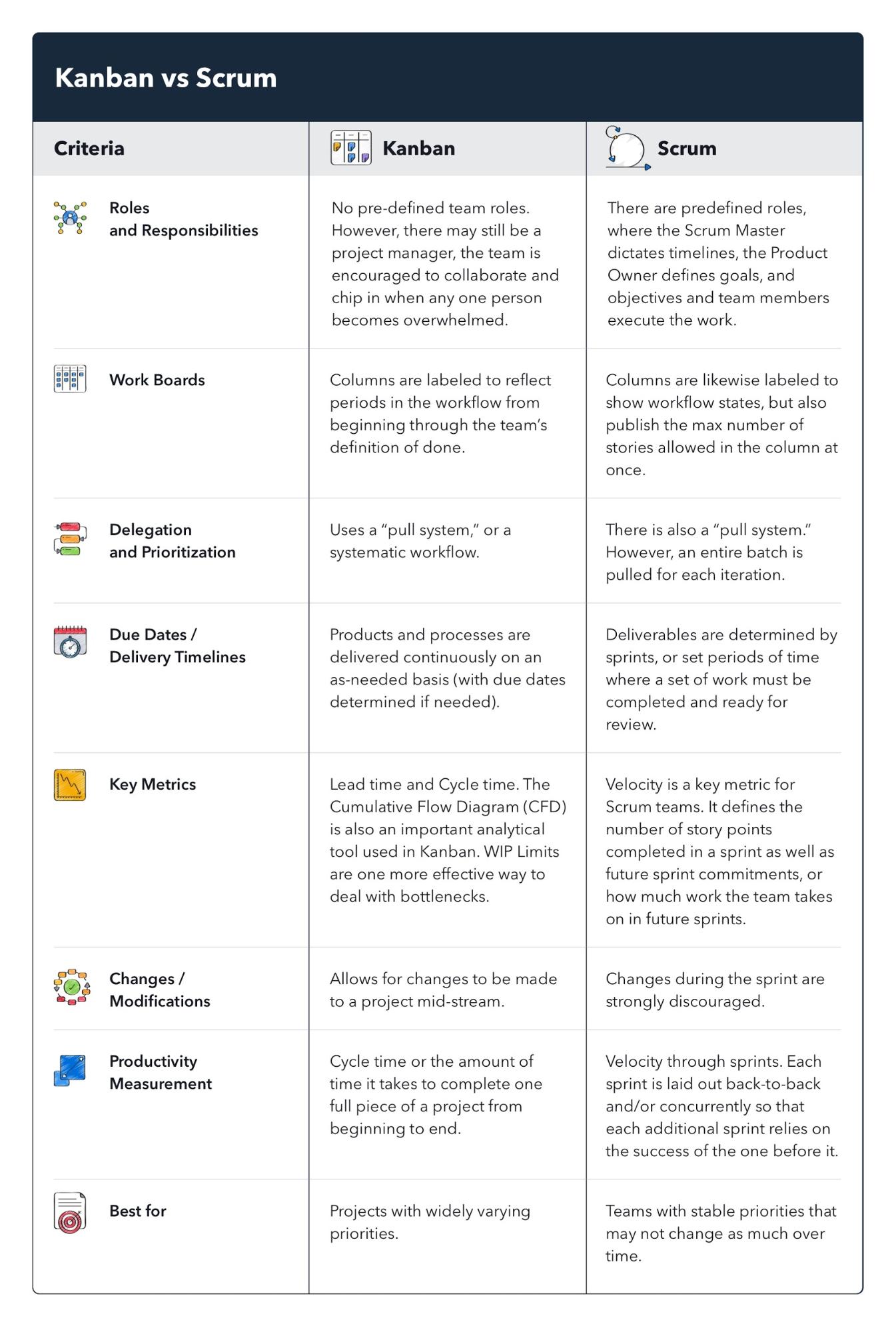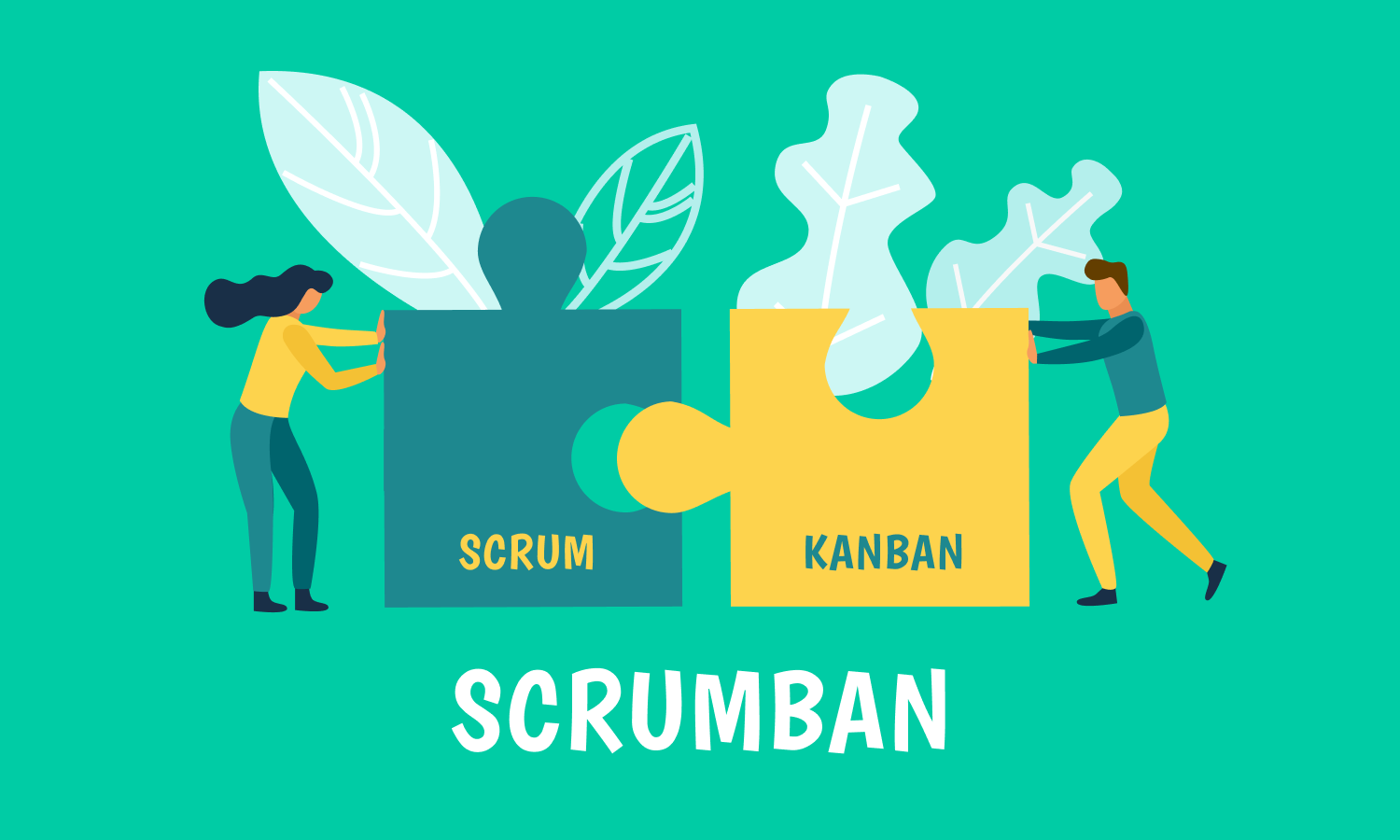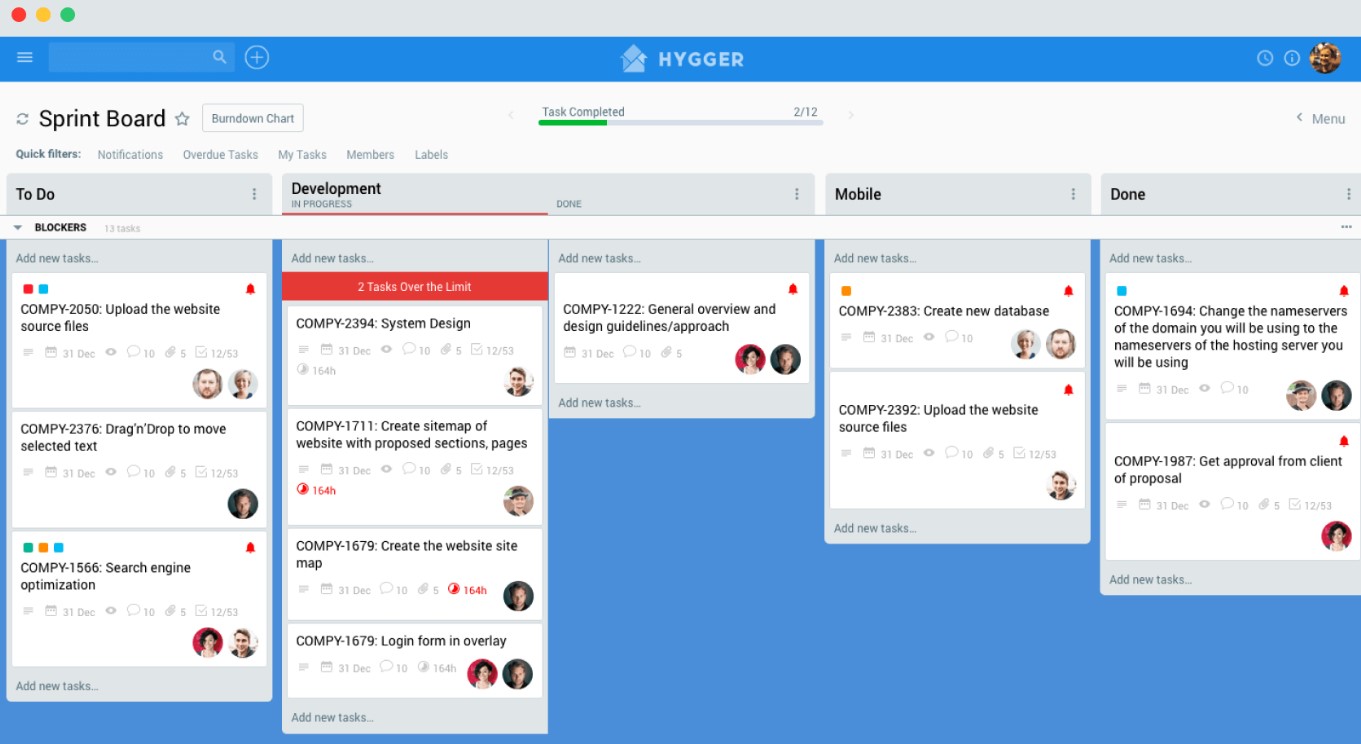Kanban vs. Scrum
How to choose the best Agile methodology for your projects
Browse topics
Is there a more discussable topic in the Agile development environment than Kanban vs. Scrum? Well, it seems that this confrontation has caused more than one generation of Agile philosophy enthusiasts to think about it. These two popular Agile methods are considered flexible and iterative. They are pretty similar in their main features, so some people think that there is no difference between Kanban and Scrum.
However, this point of view is incorrect. What is the key difference between Scrum and Kanban? Despite the fact that both methodologies serve the same goal, they have some differences in their approaches to work and its organization.
Which approach is the best to use in 2021? In order to define the differences between Scrum and Kanban we firstly should provide the definition for each method and its main features.
Brief Intro to Scrum
Scrum is an Agile software development methodology that is basically focused on teamwork. Therefore a team is the key aspect of Scrum that performs independently and operates the whole amount of the work required to complete a particular project.
There is no typical manager in a Scrum team as all team members are responsible for the final product.
Scrum is an iterative approach where all the work is subdivided into sprints. Every single sprint is an independent piece of work that has its own plan. It is interactive in nature and aimed to maximize the ability of the team to adapt and respond to changes. Usually, the sprint lasts a set period of time (2-4 weeks) during which the team completes specific work.
There are specific Scrum ceremonies that must be obligatorily arranged: Sprint Planning, Daily Scrum, Sprint Review, and Sprint Retrospective.
The method contains three key roles: Scrum Master, Product Owner, and Scrum team. In Scrum, a product backlog is prioritized by the Product Owner.
- During the Sprint Planning meeting, he or she describes the top items to the team and the team decides which items they can complete during the coming sprint.
- Daily Scrum meetings are run to inform about what each team member accomplished yesterday, what will accomplish today, and what impediments they’ve had along the way.
- The Review meeting focuses on what was done. The attendees usually include the Scrum Master, Product Owner, and the entire Scrum team. Management and customers can be also involved.
- The Retro ceremony aims to inspect the team’s last sprint. Participants concentrate less on what was done and more on how it was done.
Brief Intro to Kanban
Kanban is another Agile software development concept that does not pay great attention to the team’s self-managing abilities. The structure of Kanban-focused teams depends on a certain project and the progress of workflow.
Is Kanban a tool or methodology? In fact, the Kanban methodology is a software development system that is focused on workflow. According to the method, the progress of work can truly be a game-changing issue in terms of the team structure. Kanban workflow is typically visualized on a special Kanban board (physical or digital) that is quite similar to a Scrum board with tasks.
Kanban focuses on bringing more value to the end customers with the help of removing waste and workflow visualization. It is based on a visual board for managing work in progress, where tasks start on the left side of the board and move across the board (“Done”).
Do Kanban have sprints? There are no pre-determined timelines but the work is broken down into parts and displayed visually.
Kanban does not require specific roles, but the meetings are often run. The main Kanban ceremony is a Daily Stand Up meeting.
Is Kanban the Same as Scrum?
If you hear this question often, then the only correct answer to it is no. Kanban is not Scrum. But is Kanban Agile? Definitely! There are actually several distinctions between these Agile approaches.
Scrum is a framework known from “New New Product Development Game” published by Hirotaka Takeuchi and Ikujiro Nonaka. According to the authors, “the 1986 product development strategy was a way towards organizational knowledge creation.” Nowadays, the evolution of the Scrum concept continues, and businesses all over the world are constantly finding new ways of leveraging it as a powerful tool.
Kanban is widely used by knowledge workers who strive to improve many areas including quality, efficiency, productivity, and cycle time. This method works well when used together with Scrum or any other Agile approach. In fact, Kanban can be applied to visualize and improve the workflow, no matter what methodology you utilize to do the work.
Scrum vs. Kanban: How Are They the Same?
These two Agile approaches allow breaking down and completing large and complex tasks. Both Kanban and Scrum consider and value continual improvement, as well as work and process optimization. Besides, they both share a similar focus on a highly visible workflow that keeps all employees in the loop on work in progress and what’s to come.
Scrum vs. Kanban: How Are They Different?
How is Kanban different from Scrum? There are several essential differences in both the philosophy and the practical application of the Kanban and Scrum approaches.
You may easily define individual differences, but here we group them into the following buckets: Now let’s consider some of the most important positions more thoroughly.
Now let’s consider some of the most important positions more thoroughly.
Scrum vs. Kanban: Roles and Responsibilities
A typical Scrum team has at least three roles that are assigned to effectively process the work:
- Product Owner
- Scrum Master
- Team Members
Each role has its own responsibilities. They must collaborate to achieve an efficient balance and order. Scrum teams should be cross-functional and have all the resources necessary to complete sprints.
The Kanban philosophy does not require prescribed roles. In many cases, it makes sense to serve as a project manager, especially for large and complex projects, however, the roles should theoretically evolve with the needs of a particular project and company.
It is not obligatory for Kanban teams to be cross-functional since the Kanban workflow is intended to be used by any and all teams involved in the project. So, it is normal when team members and generalists work on different aspects of the same Kanban project from the same board.
Scrum vs. Kanban: Task Boards
Agile Kanban and Scrum boards look rather similar; however, their concepts have some essential differences.
Managing a Scrum board, you have the columns that are labeled to reflect steps in the workflow (from the sprint backlog to done).
During the Sprint, you have to move all the stories from the beginning to the final column. Otherwise, your sprint was unsuccessful. The Retrospective meeting means clearing the board, which lets the team prepare for the next sprint.
Kanban boards also have such columns labeled to show workflow states. There is only one significant difference — the maximum number of stories allowed in each column at any time, which is the limitation determined by the team. Kanban columns have a limited number of allowed stories and have no required time boxes, so there is no need to reset the Kanban board as work progresses.
Scrum vs. Kanban: Schedules, Iterations, and Cadence
Scheduling is an important point in Scrum processes. Scrum teams should be provided with a prioritized list of story points that need to be completed to get a ready product.
The goal of the team is to decide how many points can be completed within one sprint. Anything outside the scope they commit must wait for the next sprint.
Normally, the team learns their capabilities throughout several sprints, then improves and optimizes all estimates. Then, every two weeks the Scrum team works on creating a shippable product, runs a Retro meeting to discuss possible optimization and moves to the next sprint.
There are no required time boxes or iterations in a Kanban team. You may say that Kanban is iterative by nature, but continual improvement is expected to occur evolutionarily as work is continually completed. The limitations set on different conditions in the workflow will be regulated early in a team’s use of the Kanban system until optimal limits are arrived at to keep the flow effective and steady.
Scrum vs. Kanban: Key Metrics
The core metric for Scrum teams is Velocity — the number of story points completed in a sprint. Velocity defines future sprint commitments, or how much work the team takes on in future sprints.
The essential metrics for Kanban teams are Lead time and Cycle time. This is about the average amount of time that it takes for a task to move from start to finish. The success of the Kanban team is defined by improving cycle times.
Another analytical tool used in Kanban to understand the number of work items in each state is CFD — the Cumulative Flow Diagram. It helps to identify possible bottlenecks that need to be resolved for better throughput.
Do not forget about WIP Limits — one more effective way to deal with bottlenecks. Limiting work in progress caps the number of cards that can be in any column at a time.
Scrum vs. Kanban: Release Methodology
In Scrum, it is quite common to have ad-hoc releases, but it’s long been a best practice to release at the end of each sprint. Scrum teams should set an objective for each sprint and approve it for release (or not) during the Sprint Review meeting.
In Kanban reality, updates are released whenever they are ready. There is no regular schedule or predetermined due dates. The method does not prescribe a fixed time to deliver a task. When a particular task gets completed earlier/later, it can be released as needed without having to wait for a release milestone like sprint review.
Scrum vs. Kanban: Changes in the Course
It is not typical for Scrum teams to make scope changes during a sprint. Sometimes they get useful feedback and learn that what they’re working on is not as valuable to clients as they thought. In such cases, the sprint scope should change to reflect the importance of shipping value to the client first and foremost.
During the Retro meeting, all the members of the Scrum team should discuss how to limit change in the future because changes may put the shippable increment at risk.
In Kanban, you may change a workflow at any time. You may add new items to the backlog and remove or block existing cards (based on prioritization). If the team capacity changes, work in progress limits can be recalibrated and work items adjusted accordingly. This once again confirms the flexibility of this methodology.
Scrum vs. Kanban: Differences Related to Professional Software
There are many cases when a professional tool of choice drives the framework of choice, and the framework drives the principles the team adopts. However, this process should actually flow in the opposite direction.
Once you’re happy with the Scrum principles and the entire Scrum framework, then it’s time to find Scrum-focused software that will serve you well. The same goes for the Kanban system.
Luckily, there are tools that will assist you in both cases. Hygger is a robust software development tool used by Agile teams all over the world that will be definitely helpful. With Hygger’s dedicated project types for Kanban and Scrum, you will be able to realize the principles of each framework.
Feel free to learn basic tutorials on how to get started with Scrum and Kanban using Hygger functionality:
Additional differences
| Kanban | Scrum |
| Kanban prescribes graphs to get an overview of the team’s progress over time. | Scrum recommends collection of time measurements made during sprints |
| Kanban requires having a specialized team. | In Scrum, cross-functional teams are important because they can deal with bottlenecks in software development. |
| You can easily add new items if the additional capacity is available. | It is not possible to add items to ongoing iterations. |
| A Kanban board can be shared by multiple teams. | A sprint backlog is owned by only a single team. |
| It entirely focuses on the process dashboard. | The method focuses on the backlog. |
| The method focus on continuous improvement, productivity, and efficiency. | It helps firms to save time and money. |
| Team members are more likely to accomplish their goals easier because of the visual nature of Kanban board examples. | Projects are coded and tested during the sprint review. |
| No specific timeframes are allocated with each phase, so team members never get the idea of how much time they can take in every phase. | It requires experienced team members only. If the team consists of people who are not an expert, the project cannot be completed in time. |
| Only works well with small teams so it is not suitable for large-size teams. | Large projects can easily be divided into easily manageable sprints. |
The Hybrid Approach: Can You Use Kanban with Scrum?
Yes, it is possible to create a Scrum-Kanban hybrid and its name is Scrumban.
Scrumban is a great solution in the case when 100% applying Kanban boards or Scrum boards may not best serve your team.
If you’ve tried both Agile approaches and find they do not act right for you, your team can select some aspects of both. It can be an additional leadership role within the system, more steps of approval along the way, or the ability to complete work faster.
Kanban Versus Scrum: How to Make the Final Choice?
What is better Scrum or Kanban? Both methodologies perform in a tried and true fashion that is pretty hard to argue against. However, your decision should not be made overnight without considering important factors. The roulette game is not very appropriate here.
Many teams around the globe apply hybrid models influenced by both Kanban and Scrum. Modern project management software solutions try to simplify their lives. They offer the most reliable Agile features that make sense for them no matter whether it is Scrum, Kanban, or a mix of both.
You can simply layer on more and more powerful features as you learn what works for your team instead of implementing one framework on day one.
Conclusion
From the differences mentioned above, it is quite clear that Kanban is a perfect solution for lightweight projects due to the few rules it implements. Scrum is ideal for large projects which may take a long duration of time to complete, in most cases several months. So, when should you use Kanban vs. Scrum?
- Scrum allows focusing on delivering the business value in the shortest time.
- Kanban is good for managing software development work. It fosters continuous improvement, productivity, and efficiency.
- Scrum is focused on the backlog; Kanban is about using dashboards.
- Kanban fosters every team member to be a leader and share responsibility amongst them all.
- Scrum Master acts as a problem solver.
- Kanban focuses on planning a different duration for individual iteration.
- Scrum prescribes time-boxed iterations.
Pick the right methodology and get a quick way to success!


